Genre Role-playing video game | ||
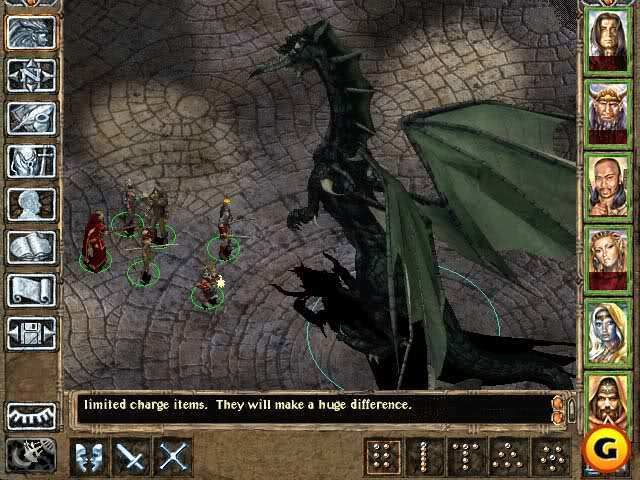 | ||
Genres Role-playing video game First release Baldur's Gate
November 30, 1998 Latest release Baldur's Gate: Siege of Dragonspear
March 31, 2016 Developers Black Isle Studios, Interplay Entertainment, Beamdog Designers Chris Avellone, Josh Sawyer, David Gaider, Ray Muzyka, James Ohlen, Kevin Martens, Brent Knowles Publishers Black Isle Studios, Interplay Entertainment, Destination Software Inc., Atari Games Baldur's Gate: Siege of, Baldur's Gate II: Enhance, Baldur's Gate: Enhance, Baldur's Gate: Dark Alliance II, Baldur's Gate: Dark Alliance | ||
Games similar to baldurs gate series
Baldur's Gate is a franchise of role-playing video games set in the Forgotten Realms Dungeons & Dragons campaign setting. The game has spawned two series, known as the Bhaalspawn Saga and the Dark Alliance, both taking place mostly within the Western Heartlands, but the Bhaalspawn Saga extends to Amn and Tethyr. The Dark Alliance series was released exclusively to consoles and was critically and commercially successful. The Bhaalspawn Saga, too, was critically received using pausable realtime gameplay; it was credited for revitalizing the computer role-playing game (CRPG) genre.
Contents
- Games similar to baldurs gate series
- Games
- Original series
- Dark Alliance
- Cancelled Games
- Overhaul Games
- Future
- Unfinished games
- Reception and legacy
- Printed media
- References
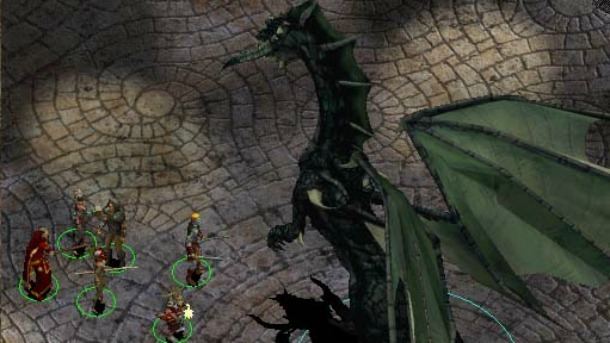
The Bhaalspawn Saga was originally developed exclusively by BioWare for the Personal Computer. In 2012, Atari revealed that Beamdog and Overhaul Games would remake the games in HD. The Dark Alliance series was originally set to be developed exclusively by Snowblind Studios, but ports were handled by Black Isle Studios, High Voltage Software, and Magic Pockets, with the second game developed exclusively by Black Isle.

Black Isle Studios had planned a third series to be set in the Dalelands and be a PC exclusive hack and slash game with pausable real-time gameplay. The game would not have been connected to the Bhaalspawn Saga series and was cancelled when Interplay forfeited the D&D PC License to Atari.

The series was revived in 2012 with the announcement of Baldur's Gate: Enhanced Edition, an update of the original Baldur's Gate using an enhanced Infinity Engine. The release of the enhanced edition marked the first release in the series in eight years, and was followed by an enhanced edition of the second Baldur's Gate called Baldur's Gate II: Enhanced Edition. Beamdog has been granted permission to develop new games with the license, with two games in development, codenames Adventure Y and Adventure Z. Adventure Y has been revealed as Baldur's Gate: Enhanced Edition - Siege of Dragonspear.
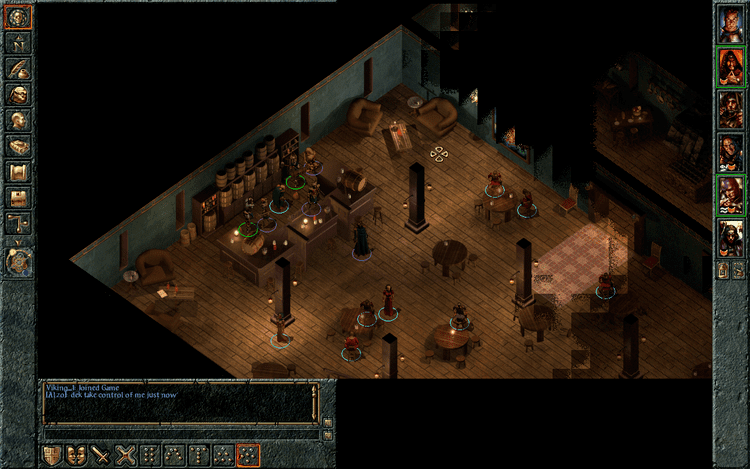
Games
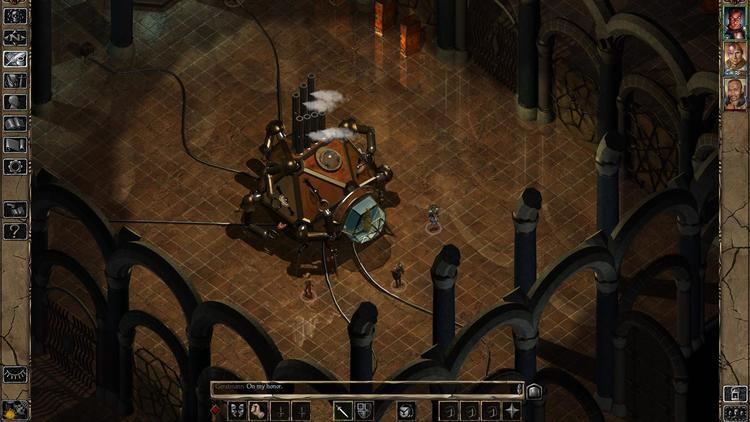
The Baldur's Gate series brought many technical advancements over computer-based role-playing games of the past. BioWare's Infinity Engine offers a pre-rendered isometric worldview, with sprite-based characters. Baldur's Gate was also the third computer game ever to make use of the Lua scripting language. The engine was also used for Planescape: Torment and the Icewind Dale series.
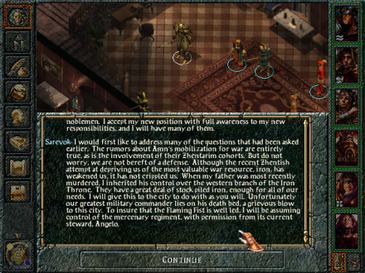
The games are based on a real-time modification of the second edition AD&D (Advanced Dungeons & Dragons) ruleset. The player's party can have up to six members, either created by the player according to the AD&D rules or NPCs recruited by the protagonist from the game world. Numerous side quests and plot twists are associated with particular NPCs and can be activated if they are found in the player's party. Through extensive, context-dependent dialogue, many characters inside and outside the player's party are fleshed out and given an added level of complexity.
Original series
The first game in the series was Baldur's Gate and introduces the player character as a powerless orphan raised in the monastery of Candlekeep, south of Baldur's Gate and north of the kingdom of Amn. The main character searches for the killer of his or her foster father Gorion, and becomes involved with the region's iron crisis which causes metal to crumble, all while battling to stay alive. An expansion pack for Baldur's Gate called Tales of the Sword Coast did not add anything to the primary storyline, but presented the protagonist with more areas to explore along the Sword Coast, more powerful enemies, more spells, and better equipment. It also allowed the player character to reach higher levels of experience, made some general changes to gameplay, and altered the original game's final battle.
The sequel to Baldur's Gate was Baldur's Gate II: Shadows of Amn. The main character is captured by Jon Irenicus and must escape into the city of Athkatla, the capital of Amn. Here the protagonist faces several different ways to figure out the reason behind the capture, as he journeys through the region of Amn and the Underdark. The game presents a number of innovations over the first Baldur's Gate game, including further specialization of character classes, better graphics, and higher power levels. It also allowed more interaction with the game's joinable NPCs, including friendships, romances, and your own party members' interactions with one another. Throne of Bhaal is an expansion pack for Baldur's Gate II: Shadows of Amn, and includes both an expansion of the original game, such as new areas to explore, and a conclusion to the Bhaalspawn story arc started in the first Baldur's Gate game.
Dark Alliance
The action RPG Baldur's Gate: Dark Alliance was developed by Snowblind Studios and others, and released in 2001 for the PlayStation 2 console, and later Xbox and GameCube video game consoles. The game takes place in the city of Baldur's Gate and surrounding area and is set in the Forgotten Realms setting, with a ruleset derived from the 3rd edition Dungeon and Dragons ruleset; the plot is unrelated to previous PC games. The console RPG's used perspective correct overhead third person view, and hack and slash dungeon crawl style gameplay. A Game Boy Advance version was released in 2004, with reduced graphics quality using an 2.5D isometric type perspective. While all ports were very well received, the original for the PlayStation 2 was the only one that gained universal acclaim. A sequel, Baldur's Gate: Dark Alliance II was developed by Black Isle Studios and released in 2004 for the PlayStation 2 and Xbox; the game used the same gameplay style as the original, and was also positively reviewed. The gameplay style was expanded to make the game more like an RPG, the ability to craft weapons, armor and amulets was added, Baldur's Gate became a hub city with the addition of a world map and being able to travel back to areas, making the game open world and many more side-quests were added as well as the ability to level up one's class.
Cancelled Games
Development on Baldur's Gate III: The Black Hound was cancelled in 2004, the third game in the Dark Alliance series was also cancelled in 2004 when Black Isle Studios was closed in 2004 by parent company Interplay Entertainment Corp. On December 2, 2008, Atari stated in a press conference that the Baldur's Gate series (among others) would be revisited after 2009. Hiring Obsidian Entertainment to try to make Baldur's Gate 3, the game would once again be cancelled upon the sale of Atari Europe.
Overhaul Games
The original game was remade in 2012 by Overhaul Games, a subsidiary of Beamdog, 14 years after the release of the original game. It was re-released on multiple platforms as Baldur's Gate: Enhanced Edition, a collection of the original game and its expansion Tales of the Sword Coast.
On March 15, 2012, Baldur's Gate II: Enhanced Edition was announced. It was developed by Overhaul Games for PC, Mac, and iPad. It features "a re-forged version of the Infinity Engine with a variety of modern improvements." Baldur's Gate II: Enhanced Edition was officially announced as a Beamdog exclusive that would feature some new content and widescreen compatibility, and would continue to utilize 2nd Edition D&D rules.
Beamdog released a new expansion named Baldur's Gate: Enhanced Edition - Siege of Dragonspear to Baldur's Gate: Enhanced Edition on March 31, 2016.
Future
Overhaul Games announced that, after finishing the Enhanced Editions of Baldur's Gate and Baldur's Gate II, they would be developing Baldur's Gate 3 with funding from Kickstarter, as Wasteland 2 had gotten. Overhaul Games later clarified their Baldur's Gate game to be a separate game from The Black Hound. Game developer Trent Oster suggested Thay and Waterdeep as possible settings for the game. Beamdog began calling the game Baldur's Gate Next as a way to differentiate it from the Bhaalspawn Saga.
In September 2016, Interplay Entertainment placed its entire catalogue of video game IPs and assets up for sale, including that of Dark Alliance. Overhaul Games later confirmed that their chances were slim of acquiring the Dark Alliance IP and assets.
Unfinished games
Baldur's Gate III: The Black Hound (code named Jefferson and FR6) was mentioned in early 2001 as a new game in the Baldur's Gate series to be made by Black Isle Studios using a completely new 3D engine.
The Black Hound was originally going to be a departure from the high-powered epic of the Bhaalspawn saga to a low-key, roleplaying plot. With protagonists progressing to around level four at the end of BIS' typically enormous campaign and a hard cap at level eight, gameplay was refocussed to a flat and wide adventure emphasizing quests over combat. In fact, the game was only titled "Baldur's Gate" due to Interplay having lost the general D&D license to Atari, but still retaining the right to make "Baldur's Gate" and "Icewind Dale" branded D&D games (the same reason as for BGDA's title.) The game was not going to be connected to the previous Baldur's Gate series in any way and would start a new series, the Black Hound series. It was to be a sequel in terms of gameplay and not story, although it would continue some aspects of the Icewind Dale II story.
The game was announced in 2002 and was said to have used the 3rd Edition Dungeons & Dragons ruleset, the gameplay of the previous Baldur's Gate games would have been updated to fit the ruleset. Many new gameplay features were also going to be added to fit the 3rd Edition Ruleset better, elements from the Dark Alliance series would have also been borrowed. The game used the Jefferson Engine which featured 3D effects such as casting dynamic shadows. The game was 75% finished before it was canceled. Its cancellation happened due to Interplay losing the right to publish Baldur's Gate games on the PC yet retaining the Baldur's Gate name for consoles, the result of this was Baldur's Gate: Dark Alliance II.
The game appeared to be canceled in 2003, just before its engine was re-purposed for Black Isle's ill-fated Van Buren Fallout 3 project. Subsequently, Josh Sawyer, one of the designers of the canceled game, resumed development of The Black Hound as a module for Neverwinter Nights 2. As of 2009, this remains a side project for Sawyer, who works at Obsidian Entertainment.
As revealed in an interview with Winterwind Productions, Black Hound developer Damien Foletto revealed the story and setting of the game, which would have been in the Dalelands. The player character would have been resting at his campsite when a lady chasing a Black Hound crashes in, she kills the hound which dies on the player's lap. Accusing the player of being in league with the dog, she is about to kill the player as well, but the Riders of Archendale arrive and scare her off and question the player. After a brief inquisition, the local magistrates tell the player not to wander far because they may have more questions. And so begins the players quest to find out who the mad cleric was, what this has to do with him/her, why a black spirit hound now follows him/her around, and why can't people just leave the player character alone and do things for themselves.
Reception and legacy
In 1999, Baldur's Gate won the Origins Award for Best Role Playing Game Computer Game of 1998, and in 2000, Baldur's Gate: Tales of the Sword Coast won Best Role Game Playing Game Computer Game of 1999. The Academy of Interactive Arts & Sciences would award Baldur's Gate the AIAS award for PC Role Playing Game of the Year. Baldur's Gate II: Throne of Bhaal and Baldur's Gate: Dark Alliance too would later win AIAS awards for Role Playing Game of the Year, taking the award for both its PC and Console categories in the year 2001. Dark Alliance II would later be awarded the 2004 RPG of the Year Award by the surviving GameFan website, later being inducted into the GameFan Hall of Fame.
Printed media
Philip Athans, editor of the Forgotten Realms novel line, wrote the first two novels in the Baldur's Gate trilogy of novels: Baldur's Gate and Baldur's Gate II: Shadows of Amn, both based on the storylines of the computer game series. The novels follow the bare basics of the original stories, but eschew several of the games' numerous subplots and include only a few of the NPCs. The Bhaalspawn main character is named Abdel Adrian in the novels. The third, and final, novel - Baldur's Gate II: Throne of Bhaal - was authored by Drew Karpyshyn.
In July 2014 a comic Dungeons & Dragons: Legends of Baldur’s Gate was announced for October 2014 release. It's set generations after Throne of Bhaal and features Minsc as the main character. It's written by Jim Zub and pencilled by Max Dunbar. It’s part of the Dungeons & Dragons 40th anniversary celebrations.
